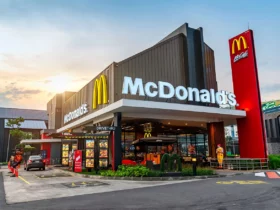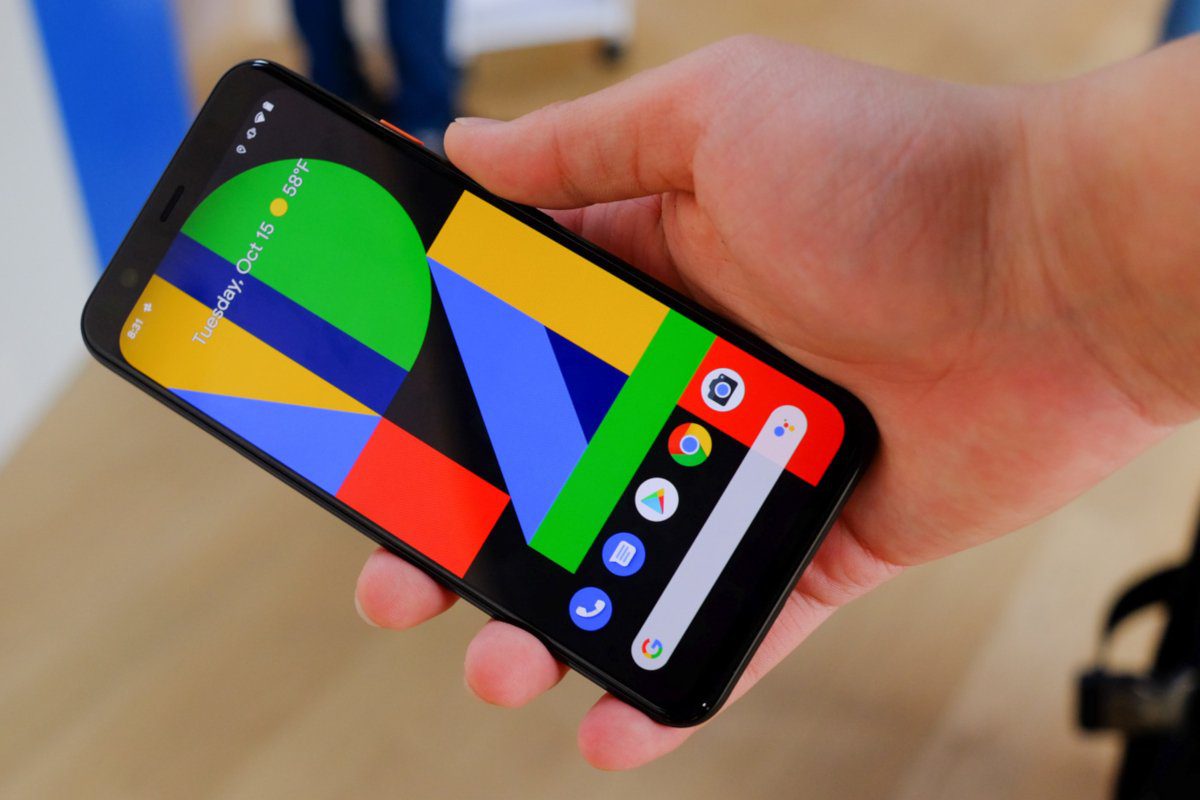Ever found yourself craving your favorite restaurant meal but just can’t muster the energy to go out?
Well, you might’ve wondered if Instacart, the grocery delivery giant, can come to your rescue. I’m here to dive into the nitty-gritty of whether you can satiate that hunger with restaurant food delivered right to your doorstep using the Instacart app.
With a promise of convenience and a vast selection of stores, Instacart has become a go-to for many of us looking to save time on grocery shopping.
But the burning question is: Can it also be your quick fix for those sudden pizza or burger cravings?
Stick around as I explore how Instacart might just be expanding its horizons beyond the grocery aisles.
Understanding Instacart’s Core Services
Overview of Instacart’s Business Model
Instacart’s business approach capitalizes on the convenience economy, partnering directly with local grocery outlets to deliver food items to customers’ doorsteps.
When I place an order, a personal shopper is assigned to handpick my groceries, offering the freshness and variety I’d get as if I were strolling down the aisles myself.
This strategic collaboration allows me to shop from well-known retailers like Kroger and Costco without leaving my home. The payment process is seamless as well; I simply use my debit or credit card, and Instacart’s shopper manages the checkout transaction.
Small and medium-sized businesses, including restaurants, rely on Instacart Business for emergency stock replenishments. The platform’s discreet dive into customer data revealed that these enterprises aren’t just occasional users but rather integral components of Instacart’s consumer base, favoring it for its dependability and variety of store choices.
Primary Focus on Grocery Delivery
Instacart’s staple service is grocery delivery to individual customers like me. What’s impressive is that they don’t rely on warehouse storage for fresh produce, ensuring that the food remains as fresh as possible. Their model focuses on real-time shopping, which mirrors the experience I would have if I were physically at the store, selecting my items. Given their commitment to providing access to a multitude of grocery store options, it’s clear that Instacart is intent on becoming an indispensable tool in the modern shopper’s arsenal.
This dedication to grocery delivery services also translates into a more expansive range of store options. Whether I’m after specialty items or basic necessities, the versatility of Instacart’s offerings gets my needs met quickly and efficiently.
Instacart’s Expansion into Restaurant Food Delivery
Recent Developments in Instacart’s Services
I’ve been keeping an eye on Instacart’s journey, and it’s clear they’re not just sticking to groceries anymore. They’ve been making moves to expand, especially with the rise of meal delivery services. It was on October 7 when Instacart announced their plan to acquire FoodStorm, a move that plunges them deeper into the prepared food sector. This isn’t just about aisles and shelves anymore – it’s about getting into the kitchen, literally.
Instacart is now competing head-to-head with big names like DoorDash and Uber Eats. Their latest feature, Ready Meals Hub, isn’t just another tab in the app; it’s Instacart stepping into the ring, offering hot, prepared meals as an alternative to traditional restaurant takeout. They’re beckoning customers to rethink their dinner plans. Forget about your usual takeout; Instacart suggests a cozy night in with grocery-prepared meals instead.
Partnerships with Restaurants and Eateries
When it comes to working hand-in-hand with local food joints, Instacart is upping the game. They’ve acknowledged the hustle and bustle that restaurants face – imagine running out of ketchup mid-service! Instacart Business is the new playbook for these situations. Restaurants and similar businesses can now set up specialized accounts, complete with nifty tools for tax exemptions, invoicing, and a catalogue of bulk items likely to catch the eye of any savvy restaurateur.
It’s not all about what’s cooking in the kitchen; it’s also about getting the food to the table, wherever that table may be. Instacart’s foray here speaks volumes about their understanding of the demand for immediacy and convenience. With Instacart’s network of grocery and convenience stores, they’re uniquely positioned to supplement restaurant supply chains, especially when sudden shortages strike.
The landscape’s changing fast, with tech and logistics intertwining with the culinary world. Services like Grubhub and Uber Eats have shown how potent this combination can be for growth and reach. With Instacart joining the fray, prepared meal delivery and emergency stock replenishments for restaurants are transitioning from a necessity to a strategic enhancement in delivering culinary experiences straight to customers’ doors.
How Restaurant Food Delivery Works on Instacart
When I’m in the mood for restaurant food but want the convenience of delivery, Instacart offers a workaround that brings my favorite dishes straight to my door. Let’s take a closer look at how this process unfolds.
Placing Orders for Restaurant Food
There’s something comforting about having the option to indulge in restaurant-quality meals without leaving the coziness of my home. Instacart’s platform allows me to scroll through a list of eateries, although not every local spot might be featured. Once I’ve honed in on my chosen restaurant, it’s as simple as tapping the ‘Delivery’ button to kickstart my order. There’s an important note, however – I need to be ready to cover the standard delivery fee, which typically sits at $5.99.
Delivery Process and Timeframes
The magic of getting a hot meal delivered without direct restaurant-to-door service might seem baffling, but Instacart streamlines it rather well. After placing my order, Instacart dispatches a shopper to swoop in and pick up my food. The goal is to transition from restaurant pick-up to my doorstep swiftly, often within a timeline that reflects the brand’s commitment to promptness. The exact time frame depends on various factors – traffic, order volume, and the specifics of the restaurant’s preparation time. Yet, when things align, I’ve experienced the delight of enjoying ready meals and other prepared foods delivered in as soon as 30 minutes through the Ready Meals Hub feature within the Instacart app.
Each order is an orchestration of timing and efficiency, where my shopper contends with factors like store navigation and traffic to uphold Instacart’s speedy delivery promise. This quick turn is part of what keeps Instacart at the top of the grocery delivery game, with their reach extending to over 20,000 retailers and a presence in more than 5,500 cities.
Comparing Instacart with Traditional Food Delivery Services
Instacart vs. DoorDash and Uber Eats
As I explore the fascinating world of food delivery services, I’ve noticed that each platform has its own charm when it comes to delivering restaurant-quality food right to our doorsteps. Taking a deep dive into Instacart, DoorDash, and Uber Eats reveals some interesting contrasts. Although Instacart has built its reputation on grocery deliveries, its foray into restaurant delivery has turned heads. DoorDash and Uber Eats, on the other hand, are veterans in the game, primarily focusing on partnering with restaurants to deliver hot meals to hungry customers.
Evaluating DoorDash and Instacart side by side, the similarities are noticeable, with both platforms offering cuisines from a variety of local eateries. Delivery fees and minimum order requirements often march in tandem, too. However, one cannot ignore DoorDash’s slightly more affordable pricing structure, which can be a decisive factor for many consumers.
Uber Eats, similar to DoorDash, specializes in meals from local restaurants, and often includes exclusive eateries that could sweeten the deal for food lovers. What I’ve uncovered through my own experience and from numerous consumers feedback is that while Instacart’s grocery roots remain strong, its restaurant delivery service is a noteworthy challenger in this fast-paced arena.
Unique Selling Points of Instacart in Restaurant Delivery
Diving into Instacart’s unique selling points gives us some food for thought. As I’ve mentioned, Instacart is synonymous with grocery delivery, but it doesn’t stop there. The integration of restaurant quality food into their platform comes with a $5.99 delivery fee and the added convenience of combining grocery shopping with your meal orders. This unique blend can be particularly appealing when you’re looking to stock your fridge and satiate your immediate hunger in one fell swoop.
Next, there’s Instacart’s vast reach. With partnering with over 20,000 retailers and a presence in more than 5,500 cities, this extensive network ensures a broad selection of grocery and local store options including the potential for ready-to-eat meals. When you’re craving something specific that may not be on the menu of traditional food delivery apps, Instacart could be your go-to.
Instacart also adds a personalized touch with its new drop-off feature aimed at minimizing contact, reflecting its adaptability and care for customer preferences during these evolving times. This thoughtfulness is extended through additional features like ‘fast and flexible’ delivery and ‘Order Ahead’, fine-tuning the customer experience to cater to the bustling lifestyles we lead today.
It’s evident that Instacart’s journey into the world of restaurant food delivery is taking shape, bringing along the grocery dimension as an enthralling edge over traditional restaurant delivery services. The integration of these services might just redefine the convenience of meal delivery, welcoming a new era where the lines between different types of delivery services are deliciously blurred.
Availability and Limitations
Geographic Availability of Restaurant Delivery
When I’m craving something delicious, it’s crucial to know if I can get it delivered to my doorstep. With Instacart branching out into restaurant food delivery, the scope of their service area is a burning question. While their grocery service blankets a massive number of cities and regions, restaurant delivery is somewhat different. The geographic availability is steadily increasing, with services now accessible in multiple locations where Instacart has a strong presence. However, it’s not universal and depends largely on partnerships with local restaurants.
Types of Restaurants and Cuisines Available
Diving into the melting pot of culinary delights, Instacart’s foray into restaurant delivery doesn’t disappoint when it comes to variety. Whether it’s fast food or more upscale dining options, the range of restaurants teaming up with Instacart is expanding. I’m not just talking about your average pizza and burger joints; there’s an array of cuisines waiting to be explored. From authentic sushi dives, artisanal sandwich shops, to hearty Italian trattorias, the variety is impressive. And it doesn’t stop at dinner – cafes and bakeries are in the mix too, perfect to satisfy those brunch cravings on a lazy Sunday morning.
User Experience and Convenience
Navigating Restaurant Orders on Instacart
I’ve noticed Instacart’s user interface is pretty straightforward when it comes to browsing the myriad options for restaurant food delivery. Searching for restaurants on the platform is as simple as typing in the name or scrolling through the list of available eateries. Once I find what I’m craving, selecting the Delivery option brings the menu to my fingertips. I can order from fast food joints to upscale dining with a few taps.
The Ready Meals Hub is particularly handy for those times when I need a meal delivered quickly or I’m just too tired to cook. It lets me order ready-made meals, and the best part is the delivery time—sometimes in as quick as 30 minutes. But what really stands out is the transparency; I can track my order and see when a shopper is at the restaurant picking up my food, which gives me a pretty accurate idea of when it’ll arrive.
Benefits and Challenges for Consumers
There are undeniable perks to using Instacart for restaurant food. The convenience factor tops the list; I don’t have to step outside my home to enjoy a delicious meal from my favorite restaurant. And with the current variety of cuisine options, it seems like there’s something for everyone, no matter the dietary preference or craving.
Then there’s the aspect of larger order sizes. Data has shown that with prepared foods and catering orders, my basket tends to be fuller and I’m likely to order more often. It’s a boon, because who doesn’t love a hearty meal with variety? Plus, I’ve seen that it’s more profitable for the businesses involved, which in turn could lead to more partnerships and options available to me down the line.
But, like most services, there are some hitches. Not all restaurants are on the Instacart app, and when they are, I have to be ready to pay a delivery fee, generally around $5.99. While the convenience is a major plus, it’s important for me to balance that with the additional costs.
For a service that was once limited to grocery shopping, the expansion into restaurant delivery has offered a fresh experience for consumers like me who value time and comfort. It’s interesting to see how a platform can adapt and cater to changing consumer needs, especially when it comes to food—the essential fuel for our day-to-day hustle.
Pricing and Fees for Restaurant Delivery
Understanding Instacart’s Pricing Structure
When diving into the costs associated with Instacart’s restaurant delivery, it’s crucial to look at the pricing structure laid out by the service. Unlike traditional dine-in experiences or picking up a meal on my own, ordering through Instacart introduces a range of additional fees. First and foremost, delivery fees can vary by restaurant. While your first order may come with free delivery, subsequent orders require a delivery fee, especially if there’s a small cart involved. The fee structure is transparent on each restaurant’s Instacart home page.
Instacart encourages tipping, and I always recommend following this practice to support the delivery personnel. A tip of 5% or 20% of the total bill—whichever is higher—is a good benchmark to ensure fair compensation for the delivery workers. Minimum order amounts differ from one restaurant to another for delivery, and if I’m not careful, a small order could include an additional small cart fee of $1.99.
For those looking to use the service more frequently, there’s an option to subscribe to Instacart+ (previously Instacart Express). This subscription costs $99 annually or $9.99 monthly, offering benefits like free delivery for orders over $35 and reduced service fees.
Comparison with Other Food Delivery Services
Instacart isn’t the only player in the food delivery arena, and I find it useful to see how it stacks up against competitors. Postmates, for instance, charges a delivery fee with surge pricing during peak hours. However, by subscribing to Postmates Unlimited for $9.99 a month, you can dodge these additional costs on orders above $15. With Postmates, you can indulge in 24/7 deliveries from a wide array of establishments beyond restaurants.
Grubhub is another service that has made a name for itself. They tend to have individual restaurant minimums and other fees, but offer a free-to-use app and a $9.99 per month Grubhub+ subscription comes with its own set of perks including free delivery.
Additionally, services like Delivery.com extend their reach to not just food but also laundries and liquor, with features enabling group ordering to cut down on the number of deliveries.
So, when I assess the costs of Instacart against its rivals, it’s important to consider subscription offers, delivery and surge charges, and the type of items that can be delivered. While some services may have an edge with round-the-clock delivery or no minimums on small orders, Instacart offers the convenience of myriad items from a variety of stores and restaurants catering to different needs. The choice often boils down to personal preferences and the type of service I value most for my specific circumstances.
Future Prospects in Food Delivery
Emerging Trends in the Food Delivery Market
We’re living in exciting times, especially in the realm of food delivery. Let me paint a picture of what’s on the horizon, and I’ve got to say, it’s pretty groundbreaking. The appetite for delivery is showing no signs of slowing down, and businesses are scrambling to adapt to these trends. Sustainability is on everyone’s lips, so expect to see a push for eco-friendly packaging and a reduction in food waste. There’s a clear shift toward health-conscious choices too, which means services that cater to specific dietary needs are gaining traction.
And talk about tech-savvy – upcoming delivery platforms are not just about ordering food anymore; they’re about creating experiences. We’re likely to witness a surge in subscription models, offering customers regular deliveries of their favorite foods or meal kits. Convenience remains king, but personalization is quickly becoming the queen, as artificial intelligence makes customized suggestions based on consumer behavior.
Instacart’s Potential Growth in Restaurant Delivery
Now let’s zoom in on Instacart’s place in this ever-evolving landscape. You know them for groceries, but there’s a serious potential for expansion into restaurant delivery. Just imagine flicking through Instacart’s app and being able to add your favorite restaurant meal to your grocery order. That’s where we could be heading, folks. The company’s already shown that it’s keen to grow, what with their acquisition of FoodStorm. This isn’t just about convenience; it’s about creating a comprehensive food service that caters to every whim.
Instacart’s growing base of business customers – including restaurants themselves – is a sign of their diversifying appeal. They’re not just for your weekly food haul anymore. Now think about their network of shopper-drivers and the already established logistics. Slipping into restaurant delivery seems like a natural next step. The Ready Meal Hub serves as a potent indicator of how serious Instacart is about dominating food delivery in all its forms. With over 4,100 stores involved, it’s clear that they’re ambitious – and why shouldn’t they be? The demand is there and rising.
Given the trends and Instacart’s current trajectory, it’s shaping up to be an interesting ride on the food delivery train. I’ll keep an eye out for how these developments unfold because from what I see, the potential for growth in restaurant delivery is as tantalizing as a gourmet meal.
Conclusion: The Role of Instacart in Restaurant Food Delivery
So there you have it. With Instacart’s foray into restaurant delivery, I’m excited to see how they’ll spice up the food delivery game.
Their user-friendly platform and the ability to track my meals in real-time are huge pluses in my book.
Sure, there are some kinks to iron out, like not all my favorite eateries being available and those extra fees, but I’m optimistic.
The acquisition of FoodStorm and the focus on business customers show Instacart isn’t just dipping its toes in the water—they’re diving in.
And with the food delivery market evolving, especially with a push towards sustainability and healthier options, I’m keeping my eyes peeled for what Instacart does next. Here’s to hoping they’ll continue to expand their menu of services and keep us munching happily on our favorite restaurant meals from the comfort of our homes.













